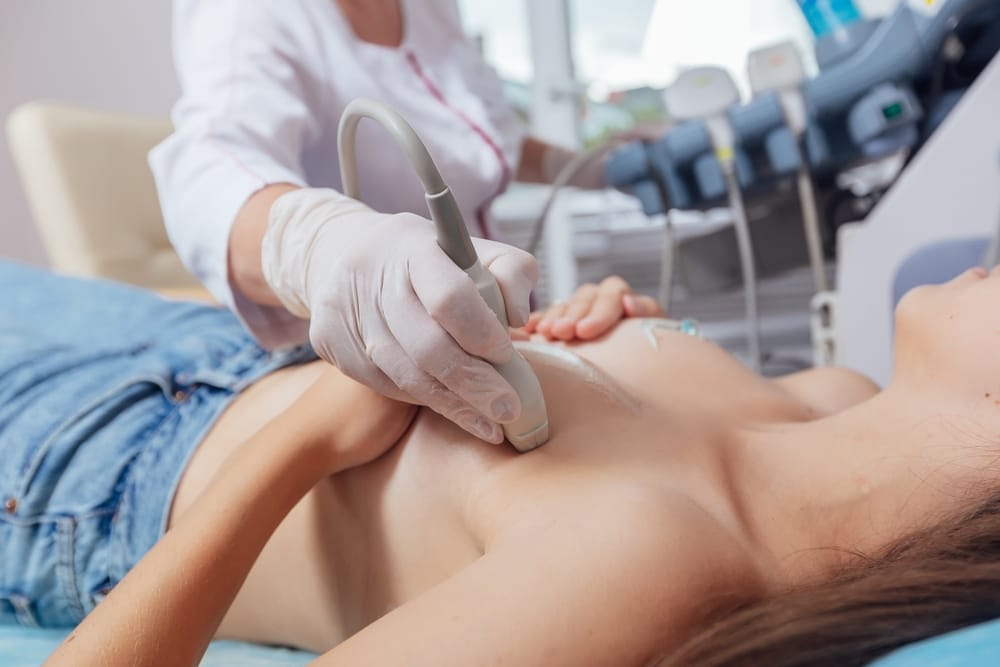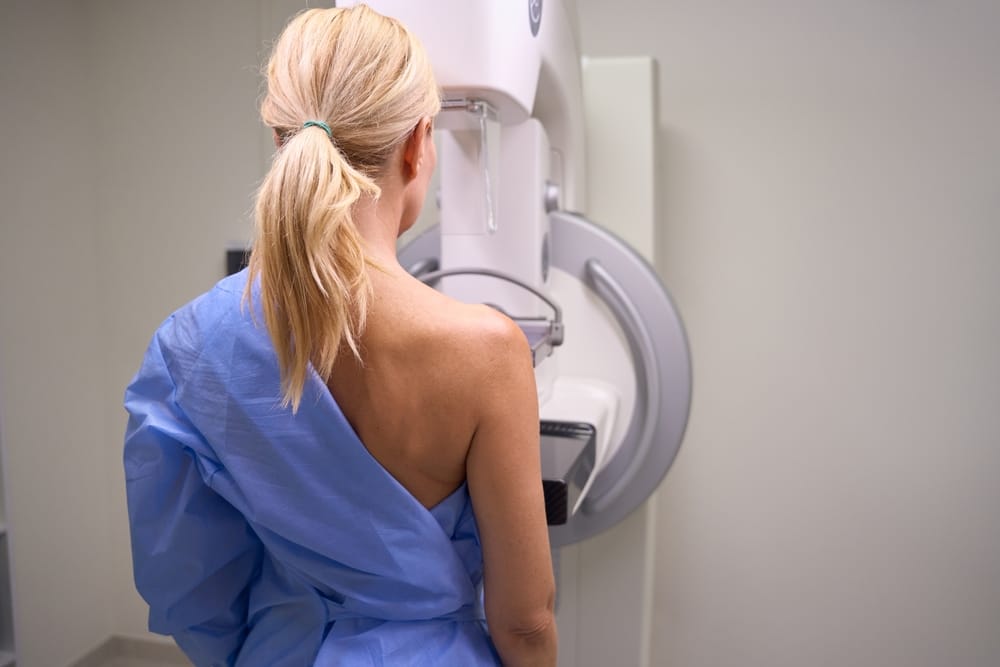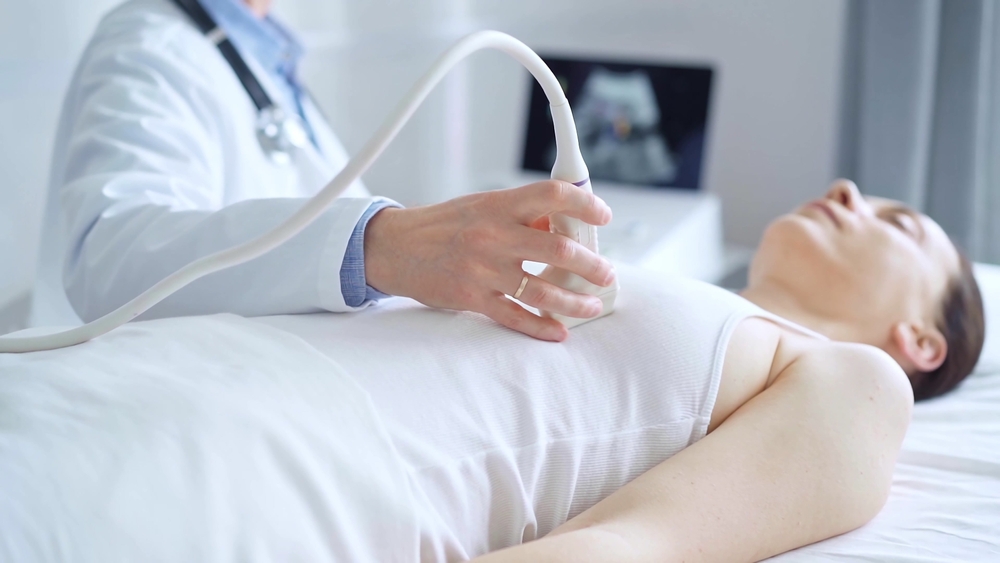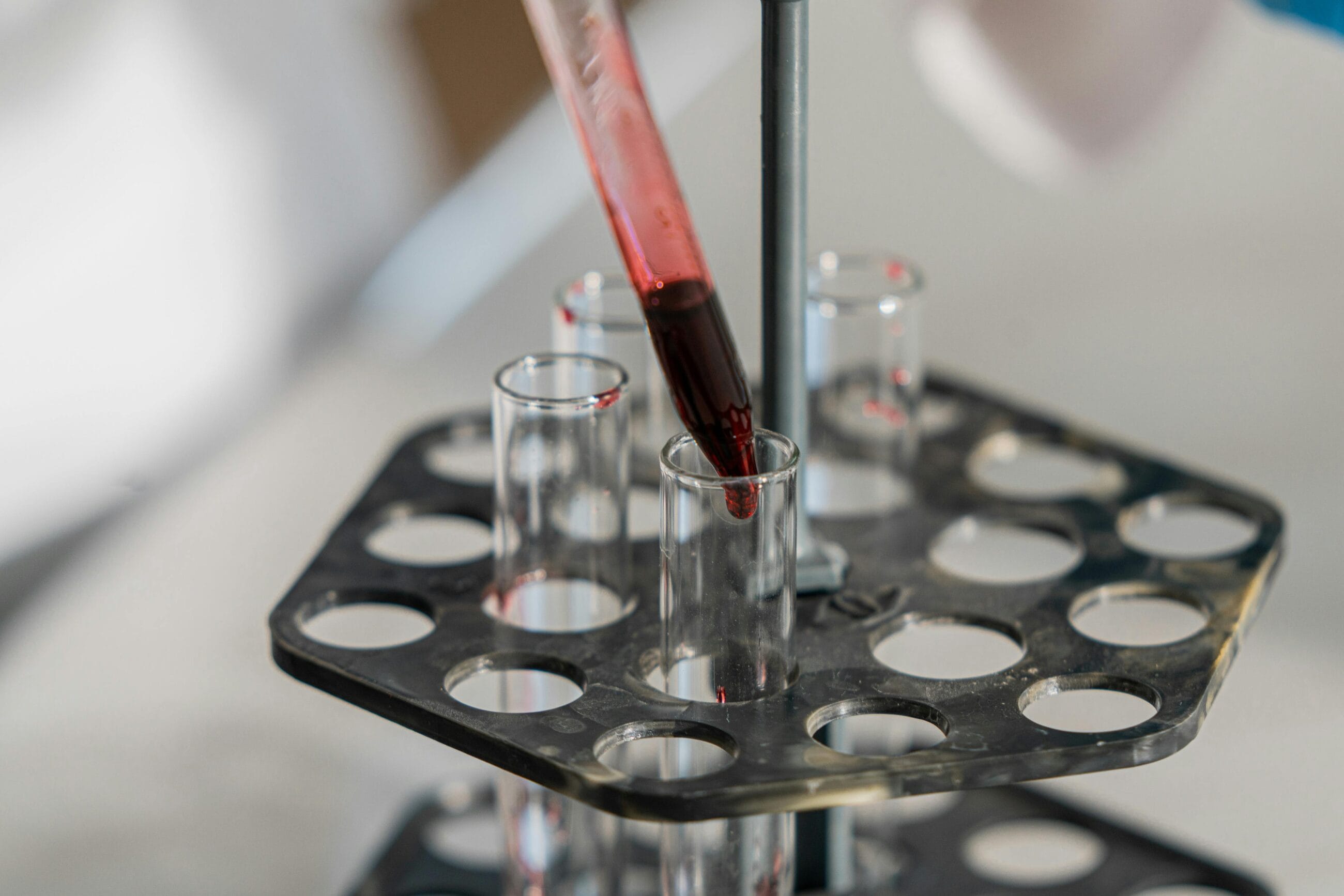Being proactive about breast health can make a big difference. Breast ultrasounds and mammograms are essential tools, each offering unique insights to help detect potential issues early. But how do you know which is right for you?
This article breaks down the benefits and uses of both, helping you make an informed decision.
Whether you’re looking for peace of mind or following your doctor’s advice, understanding these tests is key to prioritizing your health.
Understanding Breast Ultrasound: A Gentle Approach to Breast Health
A breast ultrasound is a non-invasive imaging technique that uses high-frequency sound waves to create real-time images of your breast tissue. Unlike X-ray mammography, this ultrasound examination doesn’t involve radiation, making it a safe option for women of all ages, including pregnant and breastfeeding mothers.

The procedure involves a sonographer applying gel to your breast and using a small handheld device called a transducer to capture images.
The sound waves bounce off different tissues in your breast, creating a detailed picture that a radiologist can analyze for any abnormality.
What makes breast ultrasounds particularly valuable is their ability to distinguish between solid masses and fluid-filled cysts. This distinction is crucial when investigating a lump you or your doctor has discovered during a breast cancer screening.
Benefits of Breast Ultrasound in Singapore: Why It’s an Essential Screening Tool?
Breast ultrasound is a safe, non-invasive imaging technique crucial for early detection and accurate diagnosis of breast abnormalities, offering clarity where other screening methods may be limited.
Non-Invasive and Comfortable Experience
One of the biggest advantages of breast ultrasounds is their comfort level. Unlike mammograms, which require breast compression, ultrasounds involve minimal pressure. You simply lie on an examination table while the sonographer gently moves the transducer across your breast. Most patients find the experience relaxing rather than stressful.
Superior Imaging for Dense Breast Tissue
Many Asian women, including those here in Singapore, have dense breast tissue. Dense breasts can make it challenging to detect abnormalities on traditional mammograms because both dense tissue and potential tumors appear white on X-ray images. Breast ultrasounds excel in this area, providing clear visualization of structures within dense breast tissue.
Real-Time Assessment
During your ultrasound examination, the sonographer can immediately assess areas of concern. If they notice an abnormality, they can examine it from multiple angles and take additional images as needed. This real-time capability often provides more comprehensive information than static mammogram images.
Guidance for Procedures
When a biopsy is necessary, ultrasound guidance ensures precise needle placement. This technique, called ultrasound-guided biopsy, is less invasive than surgical biopsy and provides accurate tissue samples for diagnosis.
The Breast Ultrasound Procedure: What to Expect
A breast ultrasound is a safe, non-invasive diagnostic procedure that provides detailed imaging, helping to identify abnormalities and guide further medical evaluations with precision.

Before Your Appointment
Preparation for a breast ultrasound is straightforward. I recommend wearing a two-piece outfit so you can easily remove your top and bra. Avoid applying lotions, powders, or deodorants to your chest area on the day of your examination, as these can interfere with the ultrasound imaging.
During the Examination
When you arrive at our centre, you’ll be asked to change into a hospital gown that opens in the front. The sonographer will explain the procedure and answer any questions you might have.
You’ll lie on an examination table with your arm raised above your head on the side being examined. The sonographer will apply a clear, water-based gel to your breast and use the transducer to capture images. The entire process typically takes 15-30 minutes, depending on whether one or both breasts are being examined.
After the Procedure
Once the ultrasound examination is complete, you can immediately return to your normal activities. There are no restrictions or recovery time needed. A radiologist will review your images and provide a detailed report, which you can discuss with your doctor.
Breast Ultrasound vs Mammogram: Understanding the Differences
Breast ultrasounds and mammograms are essential diagnostic tools, each serving distinct purposes in detecting and monitoring breast health.

Imaging Technology
The fundamental difference between these two screening methods lies in their technology. Mammograms use X-ray radiation to create images, while ultrasounds use sound waves. This distinction affects when each method is most appropriate.
Age Considerations
Mammograms are typically recommended for women over 40 as part of routine screening. However, breast ultrasounds can be performed at any age and are often the preferred choice for younger women who develop concerning symptoms.
Specific Use Cases
When Breast Ultrasound is Preferred:
- Investigating a palpable lump
- Examining dense breast tissue
- Distinguishing between solid masses and cysts
- Guiding biopsy procedures
- Screening during pregnancy or breastfeeding
When Mammograms Excel:
- Detecting microcalcifications (tiny calcium deposits that may indicate early cancer)
- Routine screening for women over 40
- Providing a broad overview of breast tissue
- Establishing baseline images for comparison
Complementary Screening
Many women benefit from both screening methods. A mammogram might detect microcalcifications that require further investigation with an ultrasound. Conversely, an ultrasound might reveal a suspicious area that needs mammographic evaluation from different angles.
Comprehensive Breast Health Screening: When Both Methods Work Together?
In my experience at Mediway Medical, I’ve found that combining both screening methods often provides the most comprehensive assessment of breast health. This approach is particularly valuable for women with:
- Dense breast tissue
- Family history of breast cancer
- Previous breast abnormalities
- Ongoing breast health concerns
The radiologist can correlate findings from both examinations to provide a more complete picture of your breast health. This comprehensive approach often reduces the need for additional imaging and provides greater confidence in the results.
Take Charge of Your Breast Health Today
Breast health is a priority for every woman, regardless of age or family history. Regular screenings, like ultrasounds or mammograms, are key to maintaining your health.
If you notice changes in your breasts—such as lumps, pain, or skin changes—don’t wait to get checked. Early detection is vital for successful treatment.
At Mediway Medical, we provide comprehensive breast health support in a caring, comfortable environment. Our motto, “Where Your Health Matters,” reflects our dedication to your well-being.
Whether you’re due for routine screening or have specific concerns, our team is here to guide you. Start with a thorough health screening at our clinic. If a breast ultrasound is recommended, we’ll seamlessly coordinate a referral with our trusted partner providers—making the process easy and stress-free.









